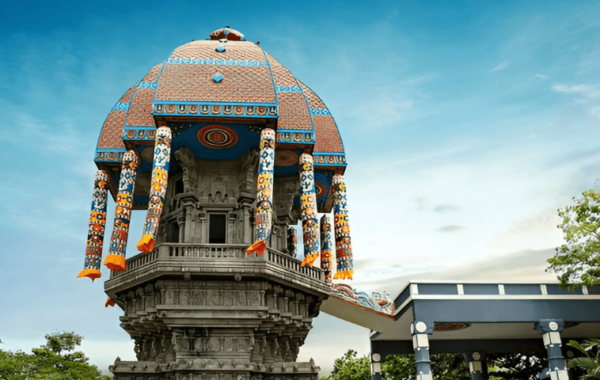
Indian Temple Architecture Explained: Dravidian, Nagara & Vesara Styles
India is home to some of the most magnificent temples in the world, each a masterpiece of architectural brilliance and spiritual significance. Hindu temple architecture has evolved over centuries, resulting in diverse styles that reflect the cultural, regional, and historical influences of different dynasties. The three primary styles of Indian temple architecture are Dravidian (South Indian temple architecture), Nagara (North Indian style), and Vesara (a fusion of the two).
Types of Indian Temple Architecture
Indian temple architecture is classified into three major styles based on regional influences, structural design, and decorative elements:
1. Dravidian Style (South India):
Characterized by towering gopurams (gateways), large temple complexes, and pyramid-shaped vimanas, this style flourished under the Pallavas, Cholas, Pandyas, and Vijayanagar rulers.Some of the best known temples are Brihadeeswarar Temple in Thanjavur as well as the Meenakshi Temple in Madurai


2. Nagara Style (North India):
Known for its curvilinear shikharas, absence of elaborate boundary walls, and ornate sculptures, this style is prominent in states like Rajasthan, Madhya Pradesh, and Odisha.The Sun Temple in Konark and the Kandariya Mahadeva Temple in Khajuraho are two notable examples.
3. Vesara Style (Deccan Region):
A fusion of Dravidian and Nagara elements, Vesara temples exhibit star-shaped layouts, intricate carvings, and ornate vimanas. The Hoysaleswara Temple in Halebidu and the Chennakesava Temple in Belur are excellent examples.

Historical Evolution of Temple Architecture
The origins of Indian temple architecture can be traced back to the early rock-cut cave temples of the Mauryan and Gupta periods, such as those found in Ajanta and Ellora. Over time, these simple cave shrines evolved into elaborate structural temples. The Pallavas, Cholas, Pandyas, and Vijayanagar rulers played a crucial role in shaping South Indian temple architecture, creating monumental structures that stand as testaments to their legacy.
Dravidian Temple Architecture: The Pride of South India
South Indian temple architecture, also known as Dravidian temple architecture, flourished under the rule of the Pallavas, Cholas, Pandyas, and Vijayanagar kings. These temples are renowned for their grandeur, intricate carvings, and well-planned structures.
Key Features of Dravidian Architecture Temples:
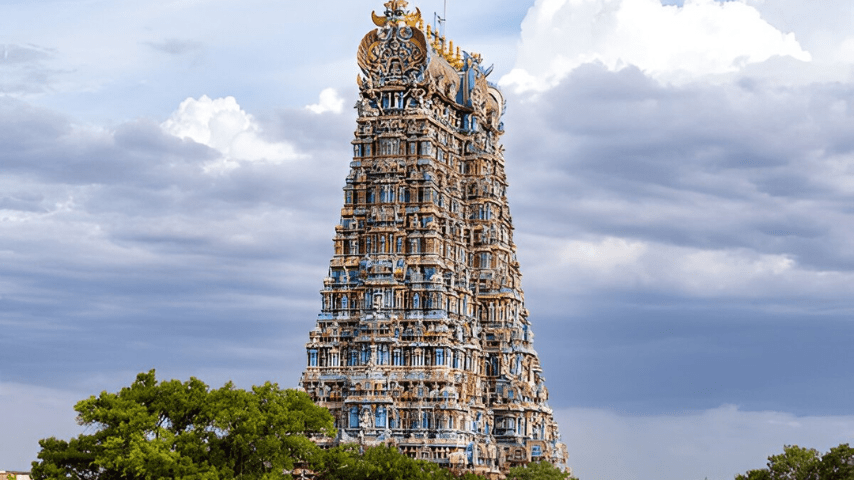
Gopurams
Massive, elaborately decorated entrance gateways adorned with sculptures of gods, goddesses, and mythological figures.
Vimana
The pyramid-shaped tower built over the sanctum sanctorum (garbhagriha), often richly sculpted.
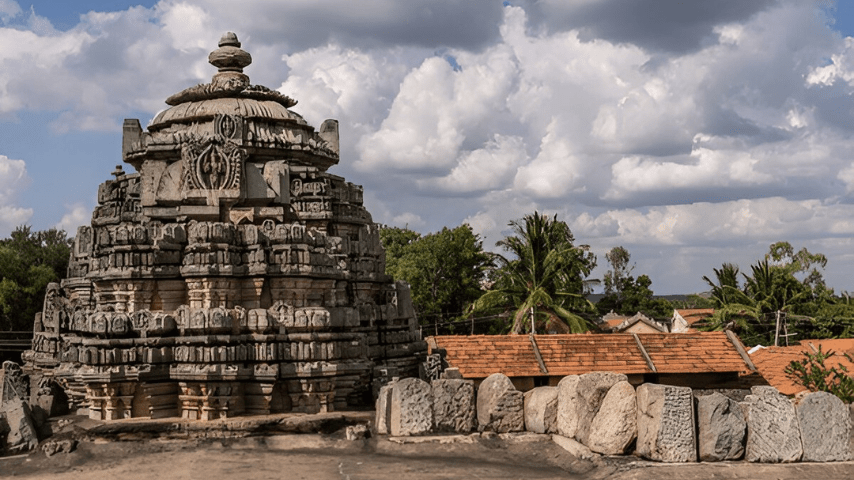

Mandapas or Mandapam
Pillared halls where devotees gather for rituals and prayers.
Prakara (Enclosures) –
Large walls enclosing the temple complex with multiple shrines and courtyards.
Temple Tanks
Water reservoirs for ritual purification and ceremonies.

Famous Dravidian Style Temples:
1.Brihadeeswarar Temple, Thanjavur (Brihadisvara )

A Chola masterpiece with an enormous vimana.
2. Meenakshi Temple, Madurai
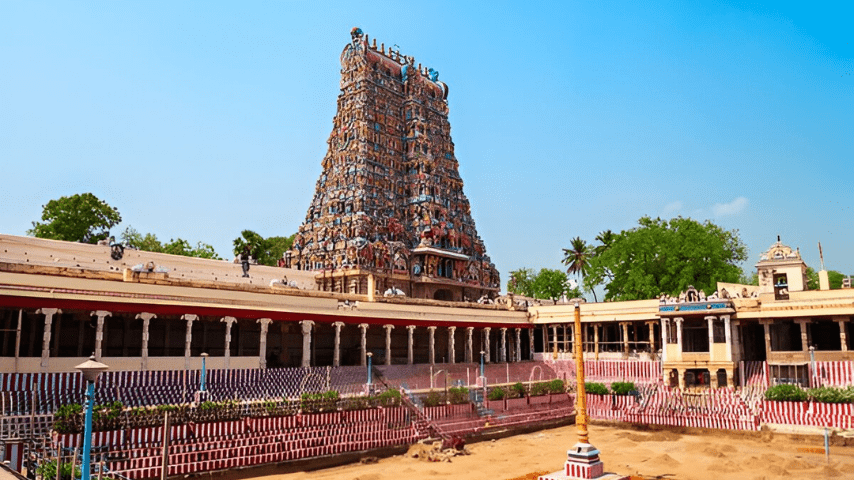
Known for its towering gopurams and intricate sculptures.
3. Ramanathaswamy Temple, Rameswaram

Famous for its long corridors and carved pillars.
Nagara Temple Architecture: The Glory of North India
The Nagara style of temple architecture is primarily found in North India and is known for its unique design elements.
Key Features of Nagara Temples:
- Shikhara (tower) – Curvilinear and rises gradually towards the sky.
- No elaborate boundary walls – Unlike Dravidian temples, Nagara temples do not have large enclosures.
- Amalaka – A ribbed, disc-like structure placed at the top of the shikhara.

Famous Nagara Style Temple Examples:
1.Kandariya Mahadeva Temple, Khajuraho
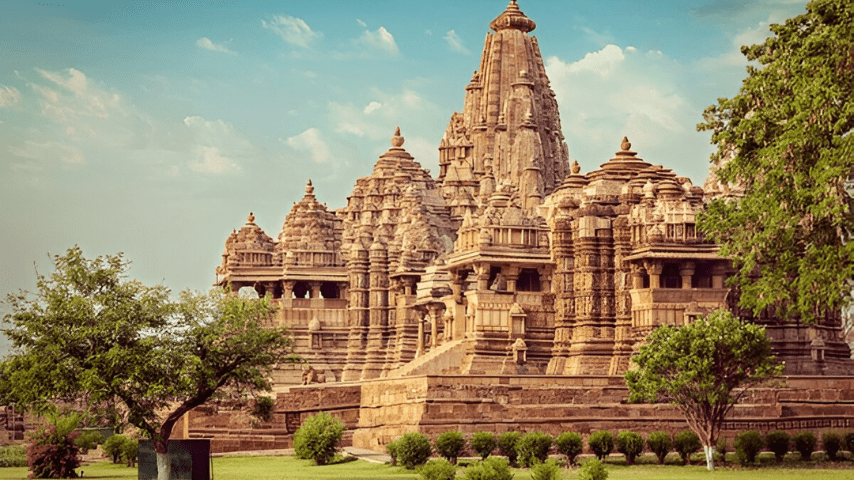
A prime example of Nagara architecture with detailed sculptures.
2.Sun Temple, Konark
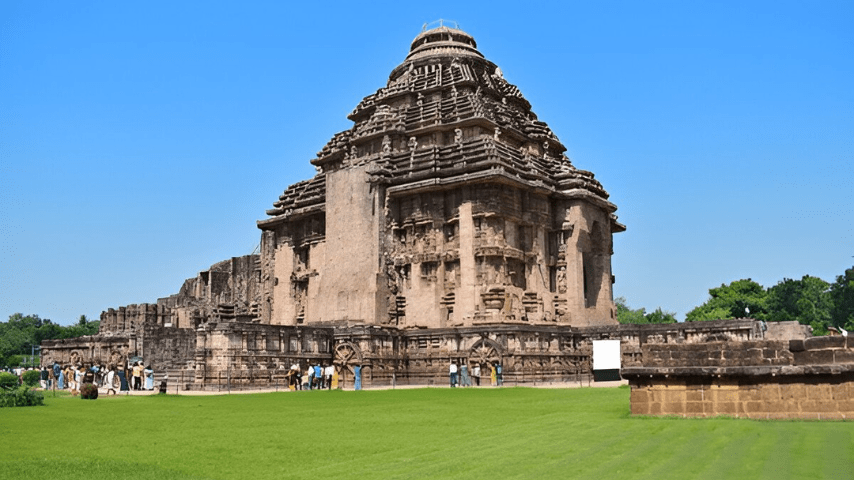
Known for its intricate carvings and chariot-like structure.
3.Jagannath Temple, Puri

A significant pilgrimage site showcasing classic Nagara elements.
Vesara Temple Architecture: A Fusion of Styles
The Vesara style represents a blend of Dravidian and Nagara architecture, found mainly in Karnataka.
Key Features of Vesara Temples:
Lower base (adhisthana) from Dravidian style, but shikhara resembles the Nagara style.
Intricate star-shaped layouts – Common in Hoysala temples.

Famous Vesara Style Temple Examples:
1.Hoysaleswara Temple, Halebidu
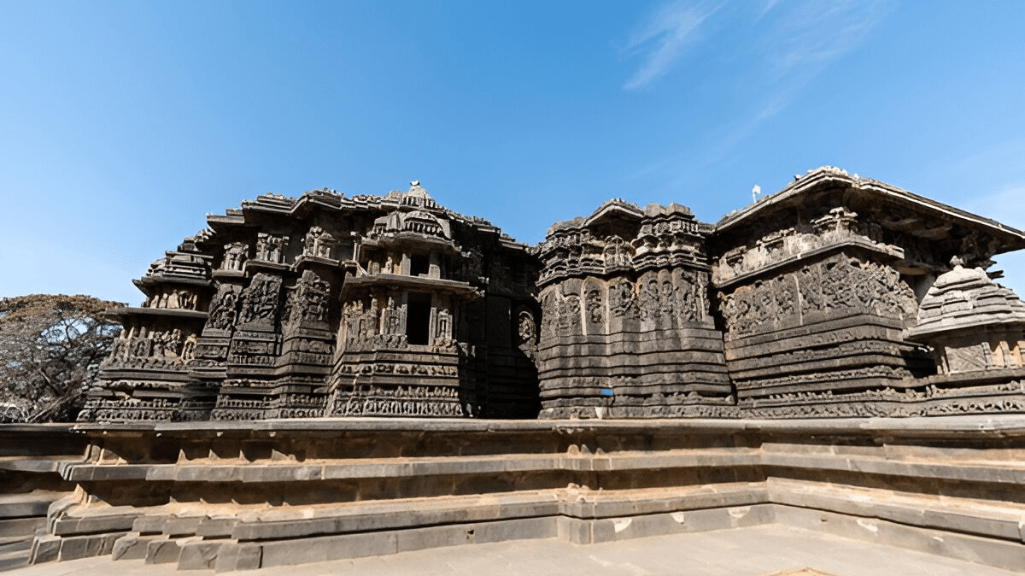
Showcases delicate stone carvings
2.Chennakesava Temple, Belur

Famous for its detailed sculptures and symmetrical structure.
Architectural Innovations in Temple Design
Indian temple architecture has witnessed remarkable innovations over time, showcasing advanced engineering, artistic brilliance, and structural ingenuity.
Innovative Elements in Dravidian Style Temples:
- Sky-high Gopurams: The towering entrance gateways evolved to be visually dominant and serve as landmarks.
- Granite Carving Mastery: The Brihadeeswarar Temple was constructed using interlocking granite blocks without mortar, an architectural marvel.
- Multi-tiered Vimanas: The precision in crafting pyramid-shaped towers with intricate carvings demonstrates advanced structural planning.
Advancements in Nagara Temple Architecture:
- Shikhara Variations: Different regions experimented with Latina, Shekhari, and Bhumija forms of curvilinear towers.
- Sculptural Integration: Temples like those in Khajuraho showcase an unparalleled blend of erotic and divine imagery, representing human emotions and spirituality.
- Mandapa Expansion: More pillared halls were added to accommodate larger congregations and elaborate rituals.
Vesara Style Innovations:
- Ornate Star-Shaped Layouts: The Hoysala temples moved away from simple square or rectangular designs to intricate star patterns, enhancing aesthetics and symmetry.
- Soapstone Sculpting: The use of soapstone allowed for ultra-fine detailing in sculptures, setting a new standard in temple craftsmanship.
- Fusion of Structural Forms: By seamlessly blending Dravidian and Nagara styles, Vesara temples introduced a hybrid approach that enriched temple architecture.
Modern Preservation Efforts
Many ancient temples in India face challenges due to environmental factors, urbanization, and neglect. The Archaeological Survey of India (ASI) and UNESCO are actively involved in restoration projects to preserve these heritage sites. Devotees and heritage enthusiasts also contribute to conservation efforts through donations and awareness programs.
Temple architecture in Chennai showcases diverse styles, much like the Santhome Church – Neo Gothic Design a stunning example of Neo-Gothic design. Explore it!
Conclusion
The beauty of Indian temple architecture lies in its intricate detailing, rich symbolism, and deep-rooted traditions. These temples stand as living testaments to India’s architectural and spiritual prowess. Would you like to explore more about specific dynasties that contributed to Indian temple architecture?
Let us know in the comments!


